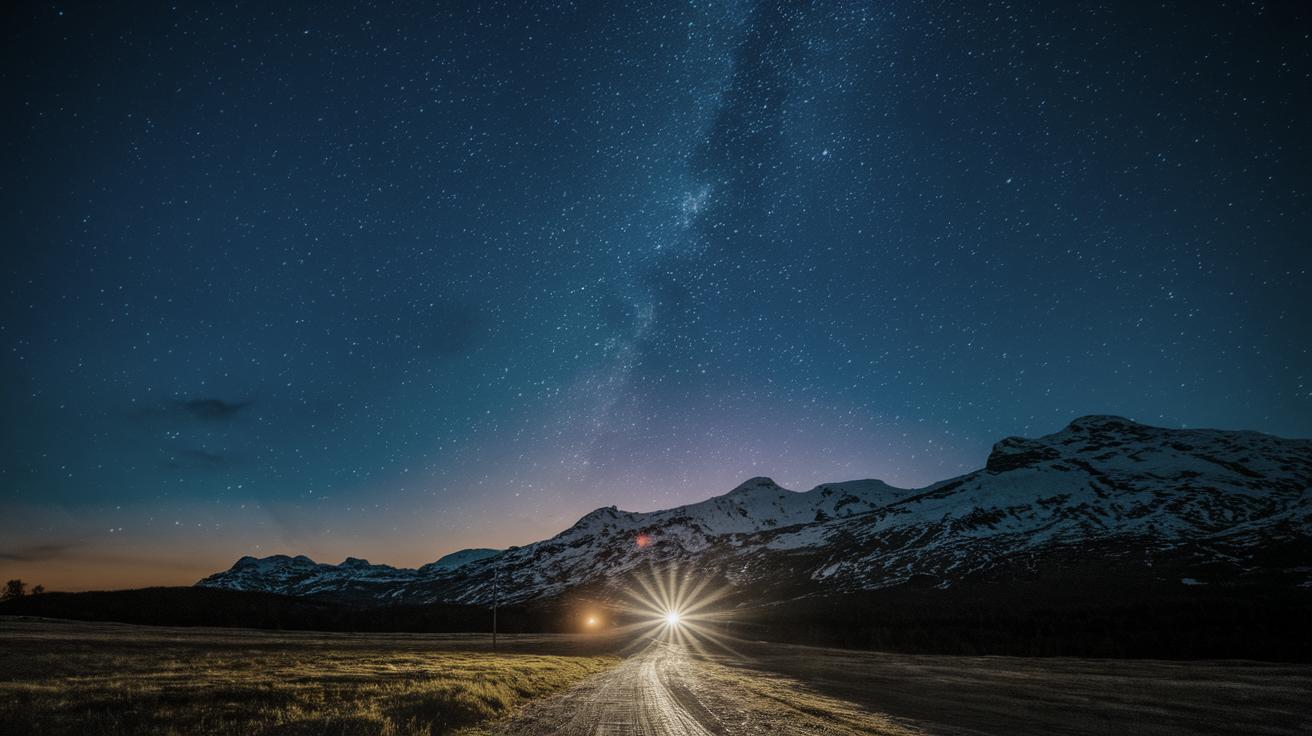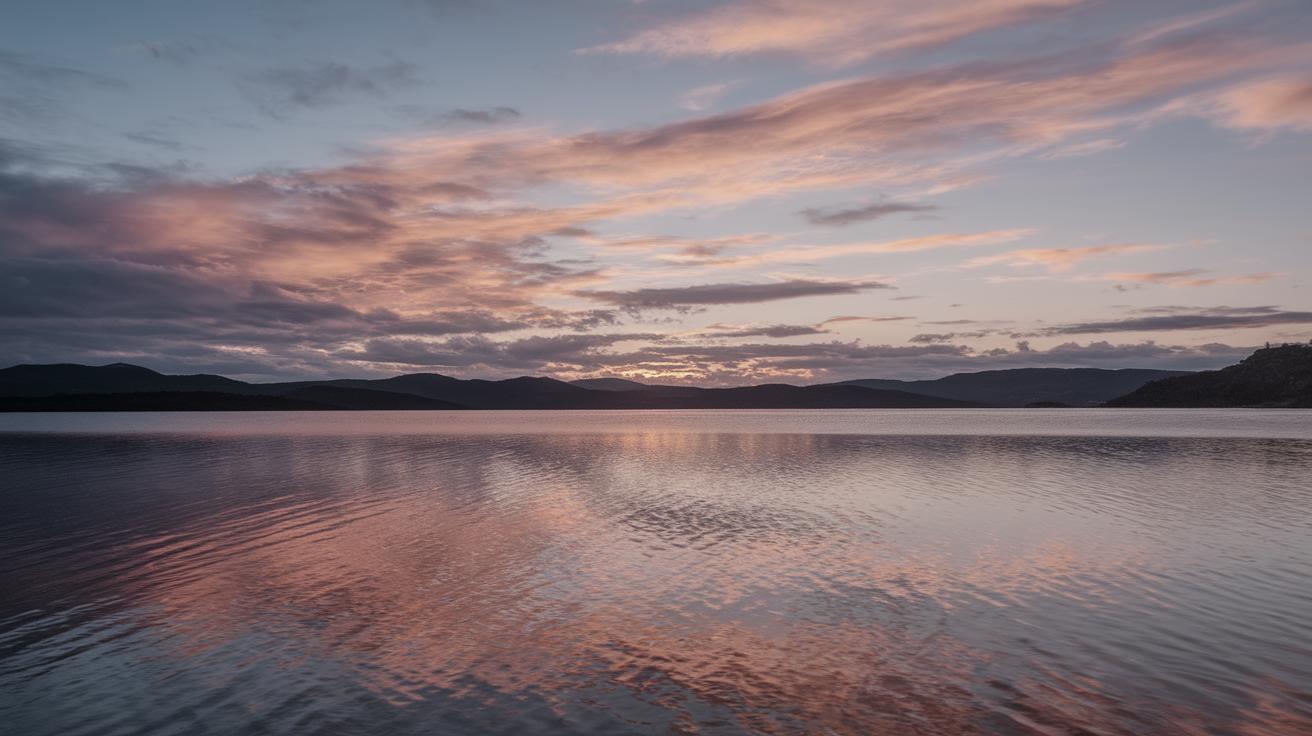Mastering Night Photography: Techniques and Tools
Night photography offers a unique canvas where light and shadow play dynamic roles, creating mesmerizing images that capture the imagination. This blog post delves into various techniques that will enhance your ability to photograph the night sky with clarity and creativity. From capturing star trails to the subtle nuances of moon photography, along with the art of vertoramas and essential equipment, we guide you through the intricacies of composing memorable nighttime images. Join us in exploring the enchanting world of night photography, an adventure into the realms of science, art, and technology that offers endless possibilities for storytelling and personal expression. Finally, discover how to frame and balance your compositions to tell compelling stories through your night photography.
The Magic of the Night Sky
The night sky, with its vast expanse and dazzling array of stars, presents an infinite source of fascination for photographers. Capturing its beauty requires not just technical prowess, but a deep appreciation of its inherent mysteries. The first step in effective night photography is understanding how to utilize available light, whether from stars, the moon, or artificial sources, to your advantage.
Long exposures are a crucial component of nighttime photography, allowing more light to reach the camera sensor, resulting in a detailed capture of celestial objects. However, mastering the balance between exposure time and aperture settings is key to avoiding overexposure or noise. This delicate equilibrium is where patience and practice pay immense dividends, yielding stunning photographs that reveal the magic of the night.
Star Trails
Star trails transform the night sky into a mesmerizing canvas of sweeping arcs that map the Earth’s rotation. Creating these enchanting patterns involves taking long exposure shots that capture the movement of stars over time. This can be achieved using the bulb mode on your camera, allowing for exposures that can last several minutes or even hours.
Careful planning is essential for star trail photography. Locate a dark area far from urban light pollution for the best visibility of stars. Investing in an intervalometer can automate the process of capturing multiple frames, which can then be merged in post-processing software to enhance the final image. Additionally, considering the composition, such as framing star trails around a central point or incorporating interesting foreground elements, adds depth and interest to the images.
Moon Photography
The moon, with its ethereal glow, holds a special allure for night photographers. Capturing its texture and detail requires careful consideration of exposure settings, as the bright moon can lead to washed-out images. A longer focal length lens and a sturdy tripod are crucial for achieving sharp, detailed shots.
Using the camera’s spot metering mode can help in accurately exposing for the moon’s surface, while balancing ISO and shutter speed ensures clarity without introducing noise. Timing is also a critical factor; photographing during the “golden hour” right after sunset or before sunrise can provide a beautifully balanced natural light. Additionally, engaging with lunar phases and positions can provide creatively varying photogenic opportunities.
Vertoramas at Night
Vertoramas—vertical panoramas—open up a new dimension in night photography, allowing for the capture of expansive nightscapes that span from ground to sky. This technique involves stitching together multiple vertical shots taken at different exposures to create a seamless, tall image that captures both terrestrial and celestial elements.
Using a wide-angle lens and a solid understanding of panoramic photography techniques is vital. Maintain consistent overlap between shots to ensure smooth post-processing. Moreover, shooting in RAW format maximizes the dynamic range, providing flexibility in editing to bring out details in both shadows and highlights. When executed successfully, vertoramas at night tell a grander story, embracing the vastness of the night sky along with its surrounding landscapes.
Essential Equipment for Night Photography
A successful night photography session hinges on having the right equipment. A tripod is indispensable for stabilizing long exposure shots, preventing any blurring caused by movement. Additionally, a camera with good low-light performance and manual settings, equipped with various lenses, enables a range of creative expressions.
Other handy tools include remote shutter releases or intervalometers that minimize camera shake, and high-performance lenses with wide apertures for capturing maximum light. Don’t forget accessories like extra batteries and memory cards, as long exposures can quickly deplete resources. With the right gear, you’re well-prepared to explore the night’s captivating mystery with clarity and precision.
Composing the Night: Framing, Balance, and Storytelling
Composition plays a crucial role in night photography, guiding the viewer’s eye and enhancing the narrative of the image. Balancing elements within the frame, such as contrasting lights and shadows, creates a dynamic visual interest that draws the observer into the story you wish to convey.
Use leading lines and the rule of thirds to guide viewers through the image. Ensure the foreground, middle ground, and background work together harmoniously to add depth and context. Each night photograph can tell a unique story, capturing emotions and moments against the mesmerizing backdrop of the night sky.
Subscribe
Join our community of photography enthusiasts to stay updated with the latest tips and tricks in the world of night photography. Subscribe to our newsletter to receive exclusive content and invitations to events that celebrate the artistry and science behind capturing the night sky.
Lessons Learned
| Technique | Summary |
|---|---|
| The Magic of the Night Sky | Understanding and utilizing natural light with long exposures to capture celestial beauty. |
| Star Trails | Techniques for capturing Earth’s rotation with long exposures for sweeping arcs of stars. |
| Moon Photography | Focus on capturing the moon’s texture and detail using specific exposure settings and timing. |
| Vertoramas at Night | Creating expansive images by stitching vertical shots, integrating ground and sky. |
| Essential Equipment for Night Photography | Key gear including tripods, cameras, lenses, and accessories for optimized night photography. |
| Composing the Night | Mastering composition techniques to enhance storytelling in night photography. |


